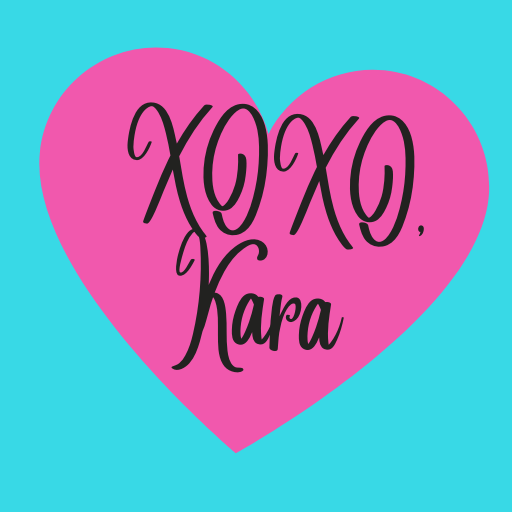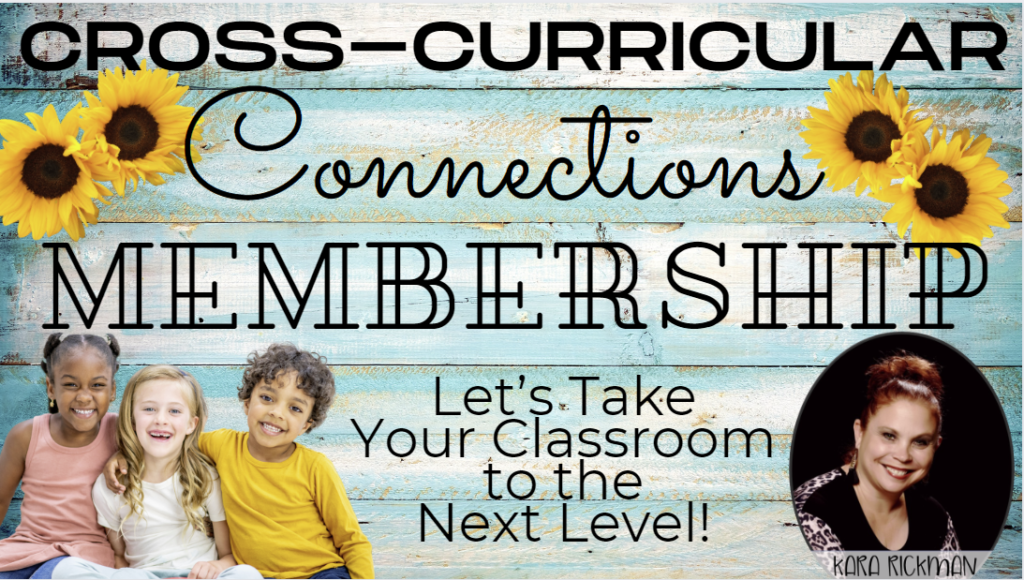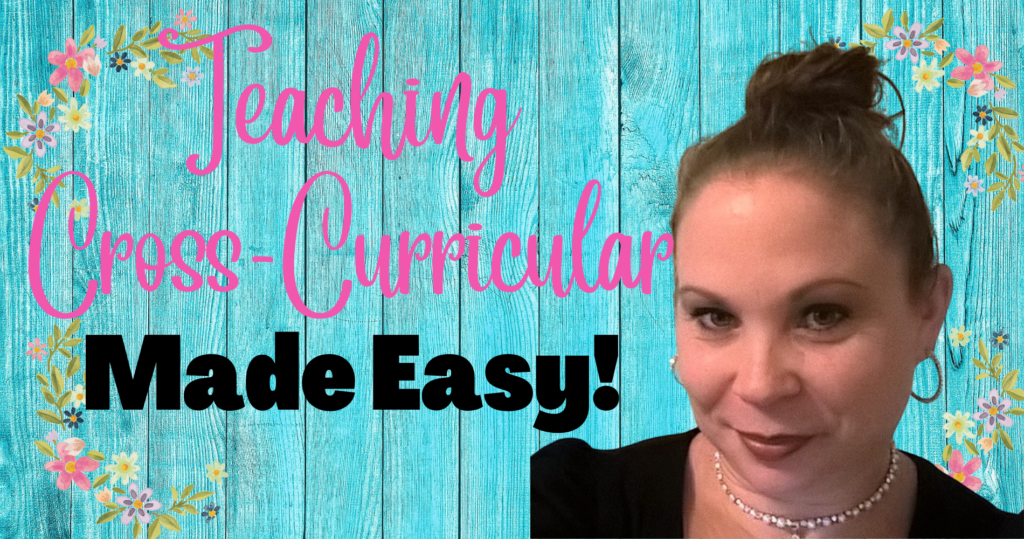
If you love reading winter read-alouds during the month of January- then you’re in the right place! I can’t wait to share with you my favorite Winter read-alouds that I use in my first-grade class! I always read them with a purpose in mind with a specific objective, task and activity in mind. It’s always important to know what purpose you want to achieve with each read aloud.
If you’re like me, I love reading a mentor text for Reader’s Workshop, Writer’s Workshop, Math Workshop, Science and Social Studies! The more we can expose our students to different genres, authors, and academic vocabulary, the better readers and writers they will be!
9 Proven Results Why Reading Mentor Texts is Important:
Reading Mentor Texts daily help young students with:
1.) Language Development: Exposure to mentor texts helps children develop their language skills. They are exposed to a rich vocabulary, sentence structures, and various linguistic elements that contribute to language acquisition.
2.) Cognitive Development: Reading mentor texts enhances cognitive development by stimulating a child’s thinking processes. It encourages critical thinking, problem-solving, and comprehension skills as children engage with the content and make connections.
3.) Literacy Skills: Mentor texts serve as models for good writing and storytelling. Children learn about the structure of stories, the use of descriptive language, and the elements of plot, setting, and characters. This foundation contributes to the development of their literacy skills.
4.) Imagination and Creativity: Exposure to diverse mentor texts fuels a child’s imagination and creativity. It introduces them to different genres, styles, and perspectives, expanding their understanding of the world and encouraging creative thinking.
5.) Social and Emotional Development: Mentor texts often feature characters facing various challenges and emotions. Reading about these experiences helps children understand and navigate their feelings, fostering social and emotional development.6
6.) Building a Love for Reading: Reading mentor texts from an early age cultivates a love for reading. When children are exposed to enjoyable and engaging stories, they are more likely to develop a positive attitude toward reading, setting the foundation for a lifelong love of literature.
7.) Cultural Awareness: Mentor texts often reflect diverse cultures, traditions, and perspectives. Reading these texts exposes children to a variety of experiences, fostering cultural awareness, empathy, and an understanding of diversity.
8.) Parent-Child Bonding: Reading mentor texts together creates opportunities for positive parent-child interactions. Shared reading experiences strengthen the bond between caregivers and children and promote a positive attitude toward learning.
9.) Preparation for Academic Success: Early exposure to mentor texts is linked to academic success. Children who are exposed to a rich literary environment tend to perform better in language arts, reading, and writing tasks as they progress through their academic journey.
What Are My Favorite Read-Alouds for Winter?
1.) Sneezy the Snowman By: Maureen Wright
2.) The Mitten By: Jan Brett
3.) The Three Snow Bears By: Jan Brett
4.) The Snowy Day By: Ezra Jack Keats
5.) Annie and the Wild Animals By: Jan Brett
6.) Snowflake Bentley By: Jacqueline Briggs Martin
7.) Tacky the Penguin By: Helen Lester
8.) Snowmen At Night By: Caralyn Buechner
1.) Sneezy the Snowman – Using Procedural Writing

I LOVE Sneezy! This is one of my favorite books because it is so hilarious and my first graders LOVE it! Every time he says: “Make Me Brand New”! I have my class chant it with me. They laugh and giggle throughout the whole story! If you’re not familiar with Sneezy, he’s a snowman who hates the cold! He tries all different kinds of things to help him stay warm, but then he keeps melting! Finally, at the end, he eats some ice cream and wears a hat and a scarf and he’s just right!
The objective for this story would be: We Can… discuss and write a procedural story using first, then, next and last. I like to have my students write about “How to Build a Snowman” using procedural writing. I also like for my students to write a “Sneezy Adventure Story” where they rewrite the story and have Sneezy go on a different adventure to stay warm. Click HERE to see my resource for Sneezy the Snowman.

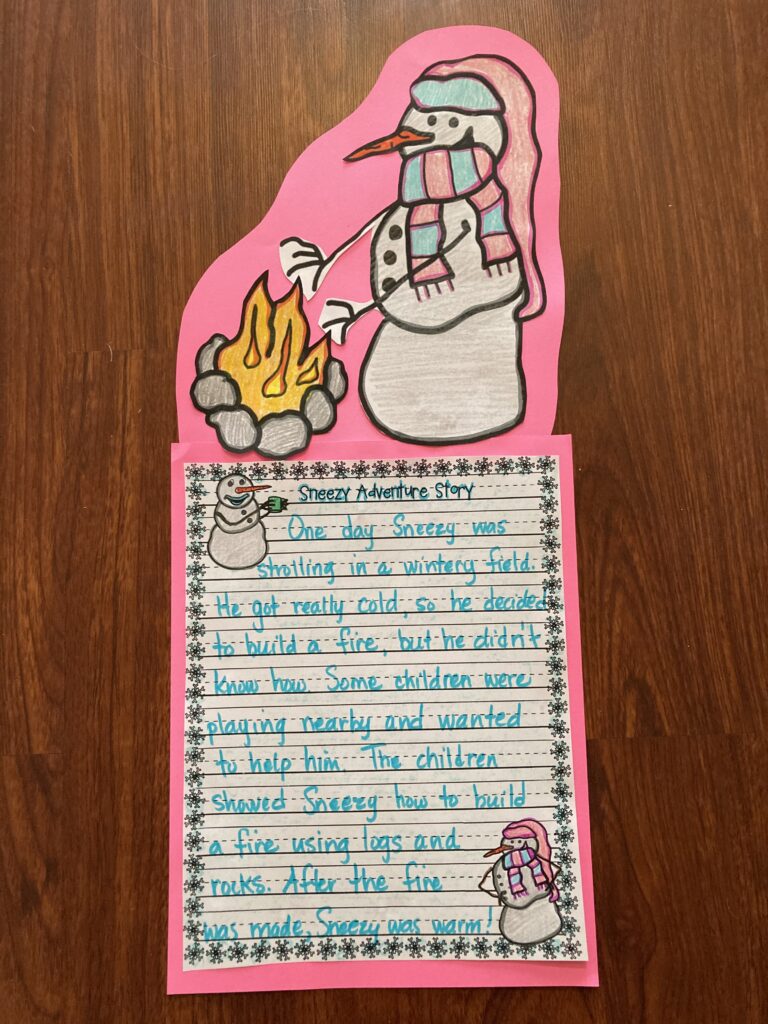
2.) The Mitten – Using Retelling and Sequencing

The Mitten is probably the most popular Jan Brett book of all time and it’s perfect for sequencing and retelling the order of how the animals crawled into the mitten. If you’re not familiar with this story, it’s about Nikki and his snow white mittens his Baba makes for him. He loses one in the snow and then all of these forest animals crawl into the mitten to get warm.
For this book, my objective would be: WE CAN… discuss and order sequencing cards by retelling the story. I use these sequencing cards to help my students put the animals in order on my pocket chart, and then we make this craftivity to hang up in the hallway. My students write about who went first, second, third, and so on. Click HERE to see my resource about The Mitten.


3.) The Three Snow Bears – Using Traditional Literature Comparison

The Three Snow Bears is such an excellent book to compare Goldilocks and the Three Bears! If you’re not familiar with this story, it’s about Alooki, like Goldilocks, ventures into the Three Snow Bears igloo to find good, warmth and a place to sleep from the cold. It’s so fun to compare how the two stories are alike and different and talk about the story elements of Traditional Literature!
For this story, my objective would be: WE CAN… discuss and write story elements about Traditional Literature. You can have your students make a Polar Bear writing craftivity where they will write about the story elements, or write about how the two stories are alike and different. Click HERE to see my resource about The Three Snow Bears.

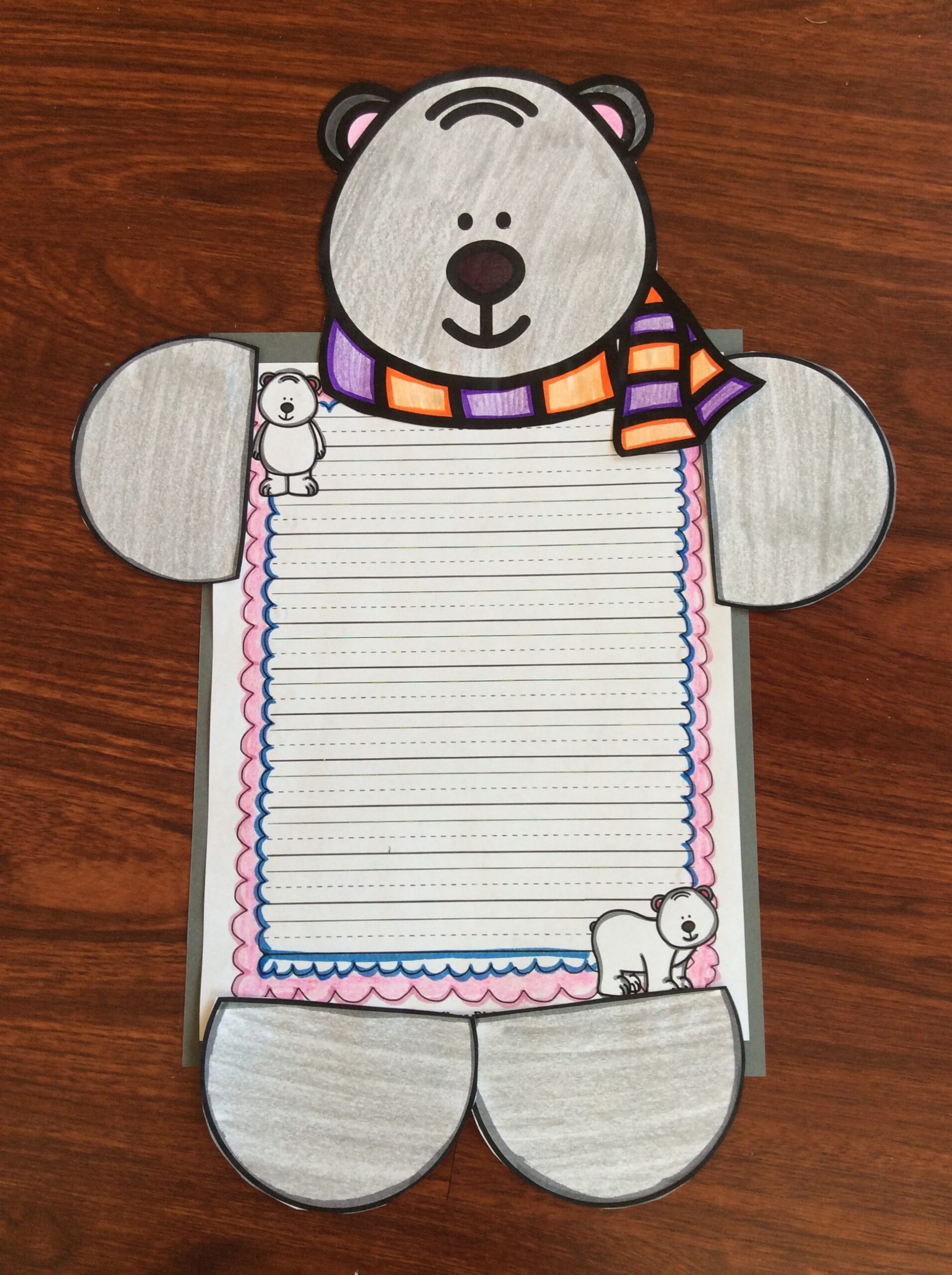
4.) The Snowy Day- Using Sequence of Events

The Snowy Day is also perfect for the sequence of events! I use these sequencing cards on my pocket chart to have my students put them in order. If you’re not familiar with this story, it’s about a boy named Peter, who wakes up and sees that it’s snowing outside! He adventures out in the snow to make tracks and a snow angel.
For this story, your objective could be: WE CAN… discuss and write the order of events from the story. Your students could also write a story about Peter’s Adventure out in the snow and write some new places that he could go. I love asking my students, “If you were the author, how would you change the story?” And see what they come up with! Click HERE to see my Snow Day resource!
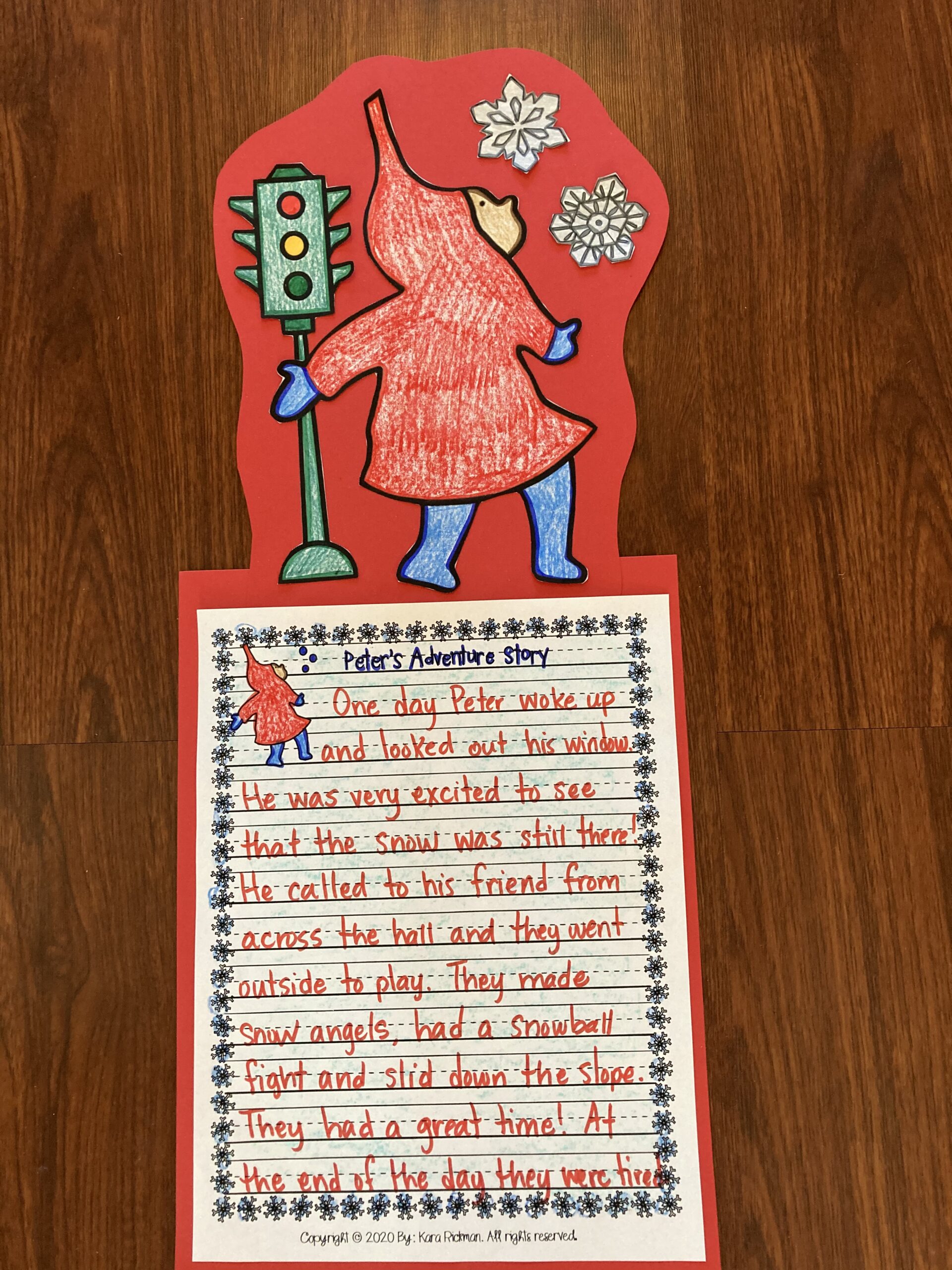
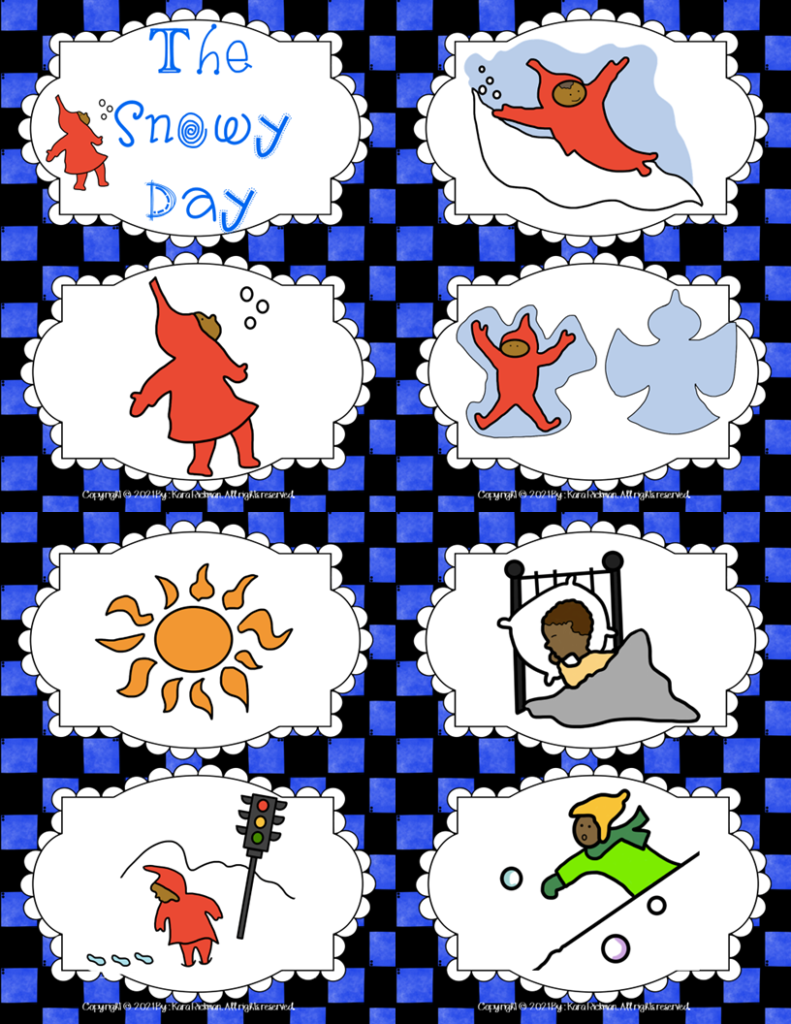
5.) Annie and the Wild Animals- Using Characterization

Annie and the Wild Animals is perfect for teaching characterization! If you’re not familiar with this story, Annie can’t find her cat Taffy- and worries that she won’t have anymore friends. She makes corn cakes to set in the snow and all of these wild forest animals come to eat the cakes. She decides they are too big and mean to be her pets so she stops feeding them. Finally at the end, Taffy returns with a pleasant surprise for Annie! It’s great to discuss how Annie’s feelings have changed from beginning to end and what made her feelings change in the story.
For this story, your objective could be: WE CAN… discuss and write about how the character changes from beginning to the end. You can have your students write about Annie’s feelings and make a writing craftivity with Taffy the cat. Click HERE to see my resource for Annie and the Wild Animals!

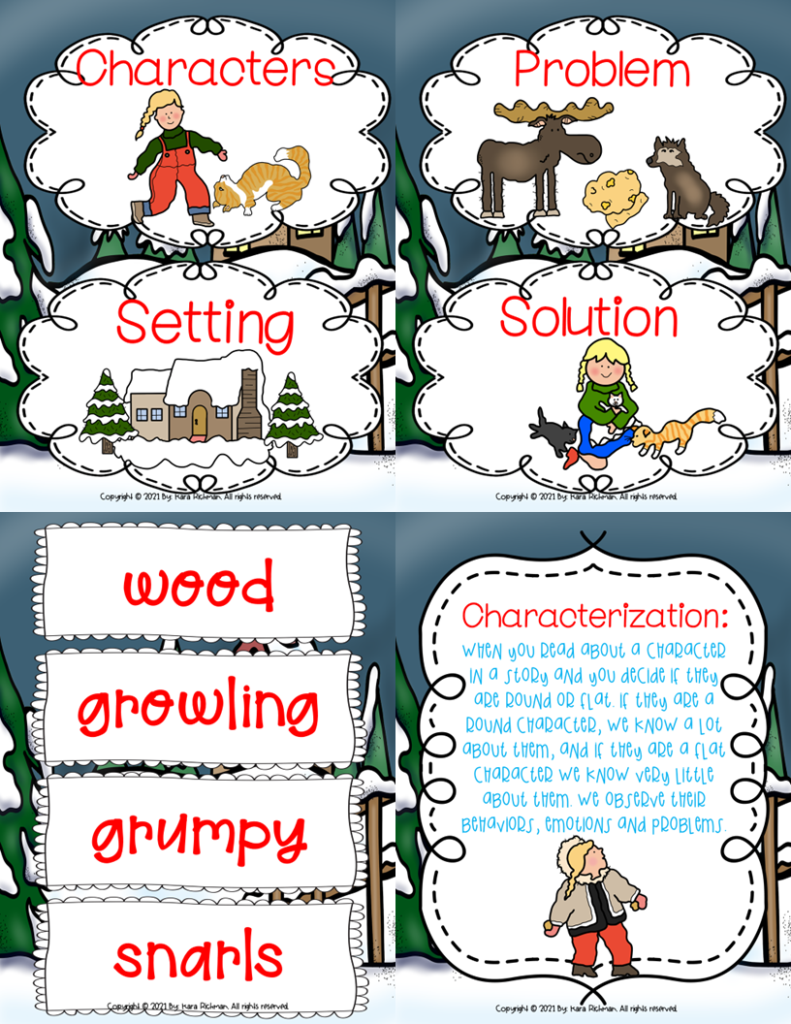
6.) Snowflake Bentley- Teaching Biography with Non-Fiction

I LOVE using Snowflake Bentley for teaching Biography and Non-Fiction texts. Even though the pictures are cartoon- you can still show your students that a biography can have illustrated pictures. If you’re not familiar with Snowflake Bentley- Wilson Bentley was a scientist who lived in Vermont and wanted to take pictures of snowflakes. He discovered that no two snowflakes are alike and wanted to show the world his discovery. After many failed attempts and lessons learned, he finally published his picture book of his snowflakes. It’s a great lesson to learn about not giving up and persevering even when you fail.
For this story, your objective can be: WE CAN… use academic vocabulary to write a biography. You can have your students use the academic vocabulary cards on your pocket chart to write a biography about Wilson Bentley. This is such a great story! Click HERE to see my Snowflake Bentley resource!
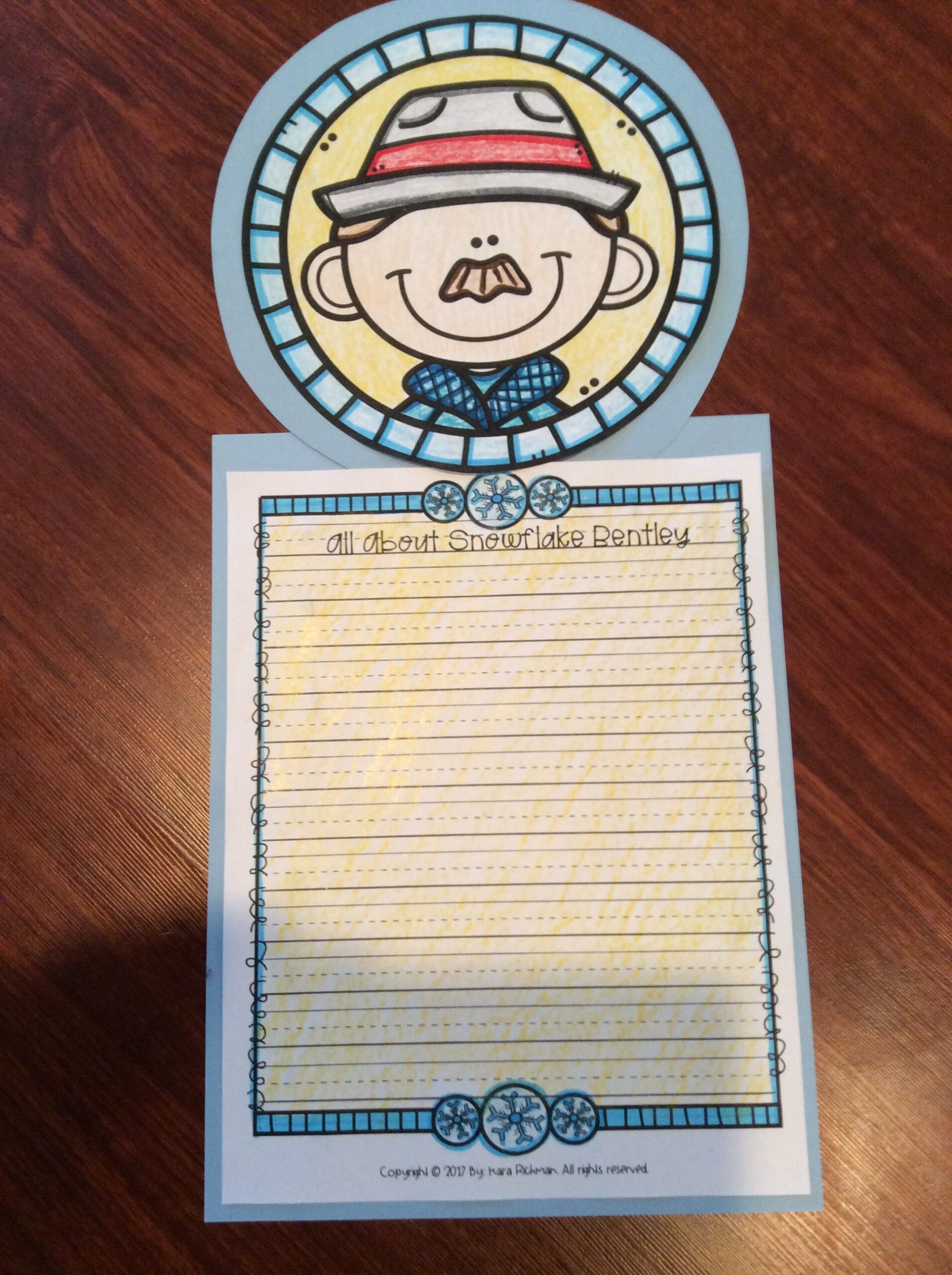
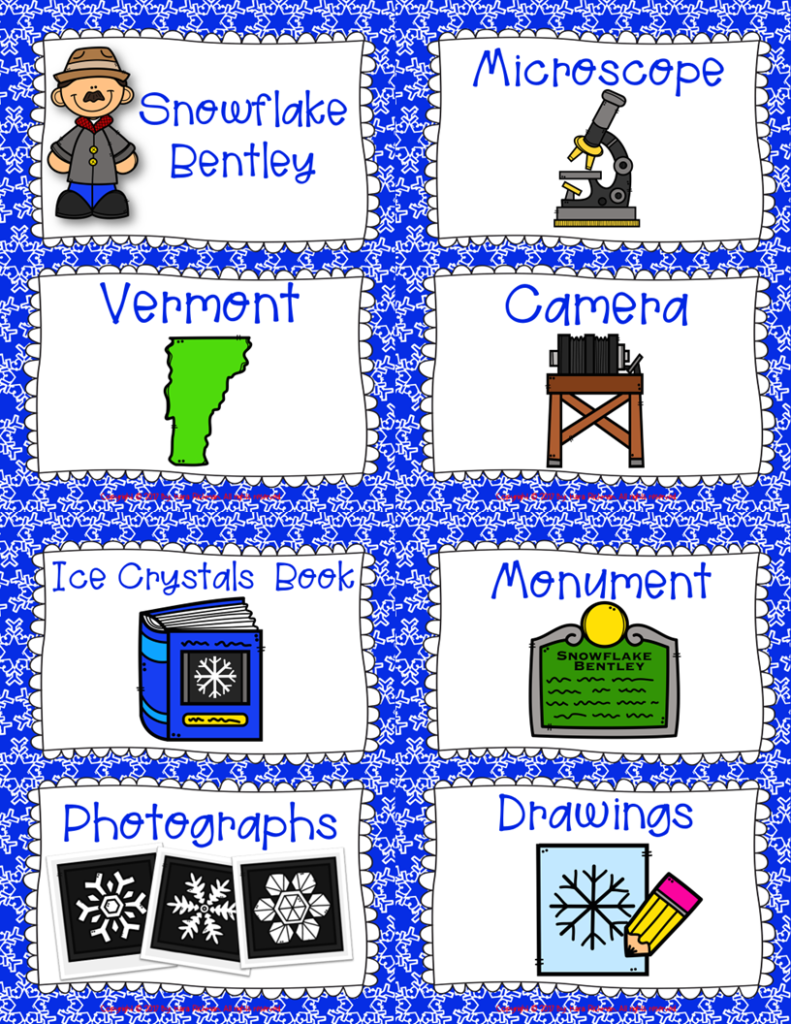
7.) Tacky the Penguin- Use for Author’s Purpose

I LOVE using Tacky the Penguin for teaching Author’s Purpose- because it’s definitely entertaining! We discuss the three types of Author’s Purpose: Persuade, Inform or Entertain. If you’re not familiar with Tacky, he’s an odd bird who doesn’t fit in. All of the other penguins on his ice block are neat, tidy and very proper… but not Tacky! Then, hunters come and want to hunt the penguins and Tacky saves the day! Along the way he falls down, embarrasses himself, but he keep being true to who he is and discovers that it’s ok to be who you are!
For Tacky, your objective can be: WE CAN… compare and write about two different stories by the same author. You can compare two different Tacky books and have your students fill out a Venn Diagram or write a sequence of events as well! Click HERE to see my Tacky resource!

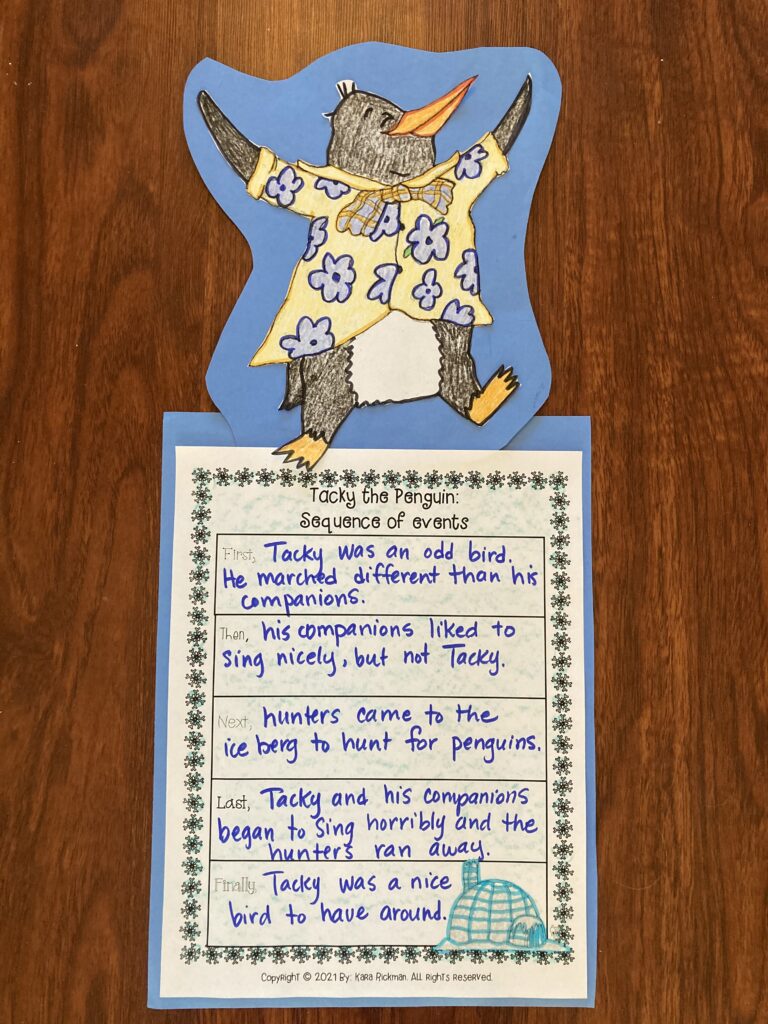
8.) Snowmen at Night- Using Descriptive Words

Snowmen at Night is such a magical story that your students can imagine what Snowmen can do at night when no one is watching! If you’re not familiar with this book, the author shows what snowmen might do at night such as dancing, sledding, and having a party!
For this story, your objective can be… WE CAN… sort and write adjectives that describe a snowman. You can have your students write their own creative story about what they think snowmen do at night, or write adjectives that describe a snowman!
You can give your students these adjective cards and have them sort them: Size, Color, Shape and Feeling! Don’t tell your students what these words are about- let them try and guess! Your students can write their adjectives on their writing template while you sort them on your pocket chart! Click HERE to see my resource for Snowmen at Night!
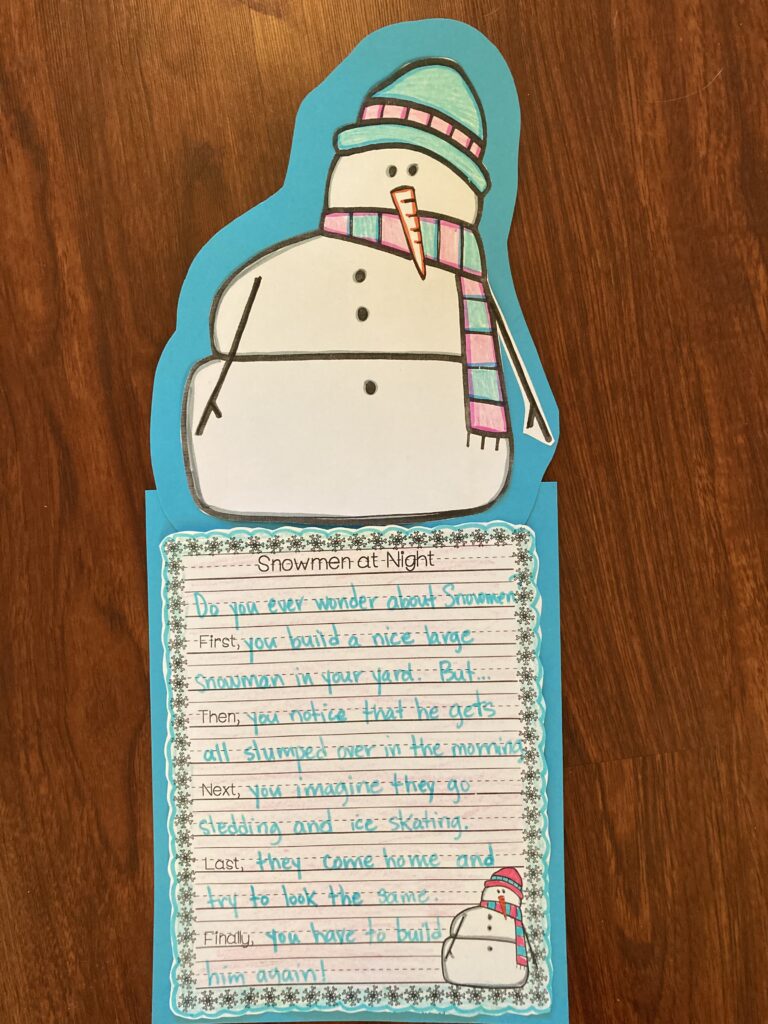
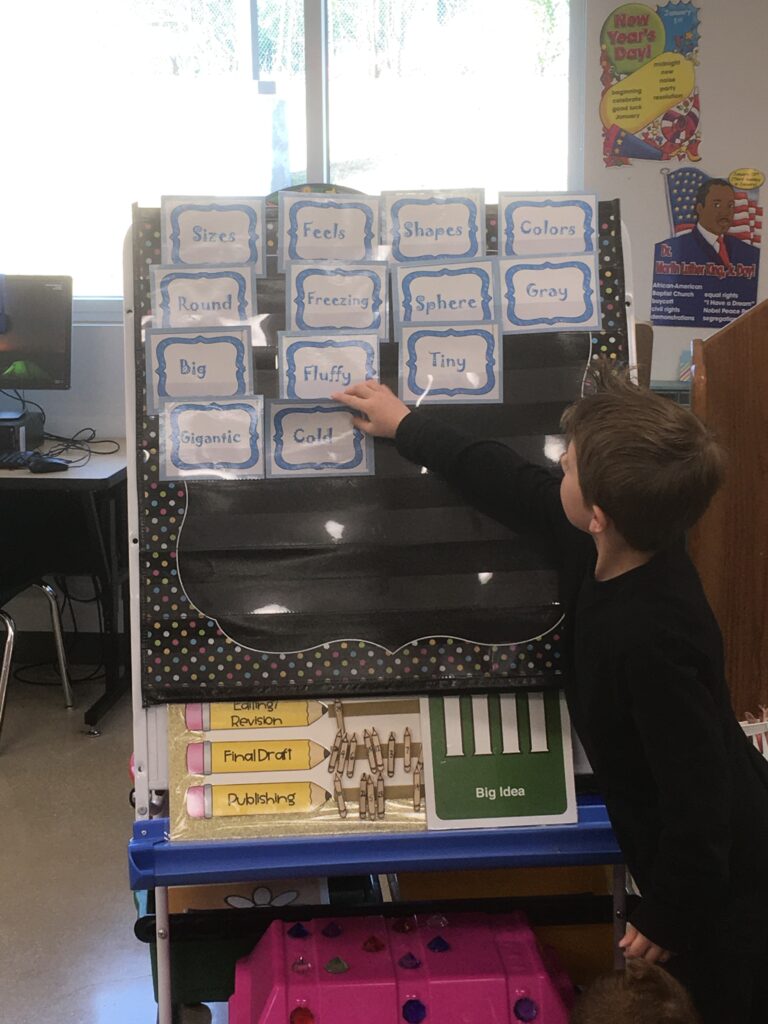
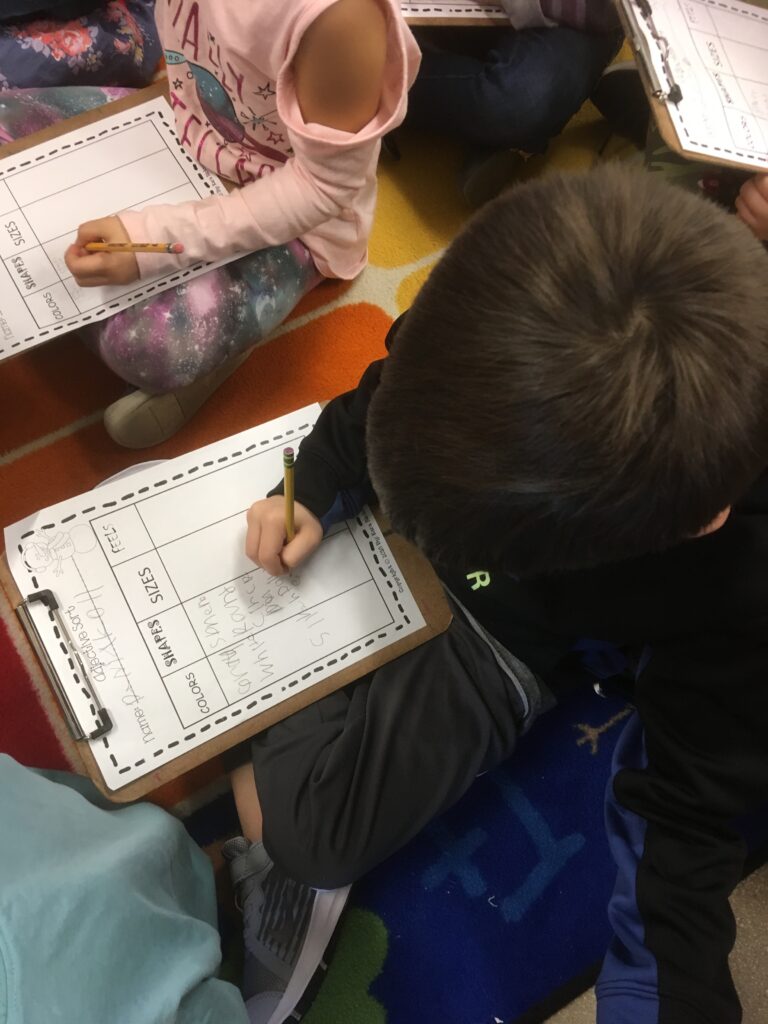
I hope you got some great ideas of some fabulous Winter read-alouds that you can expose your students to! Remember to read as often as you can so your students can hear your intonation, fluency, and expression!! This will pave the way for them to become excellent readers, writers, and creative thinkers!
Reading mentor texts to young children is a multifaceted approach that contributes to their holistic development, including language skills, cognitive abilities, emotional intelligence, and a lifelong appreciation for literature. What do you have to lose?
If you’re interested in reading about how I organize my Mentor Texts and which books I read for Reader’s and Writer’s Workshop, click HERE.
Until next time, let’s take your classroom to the next level!
